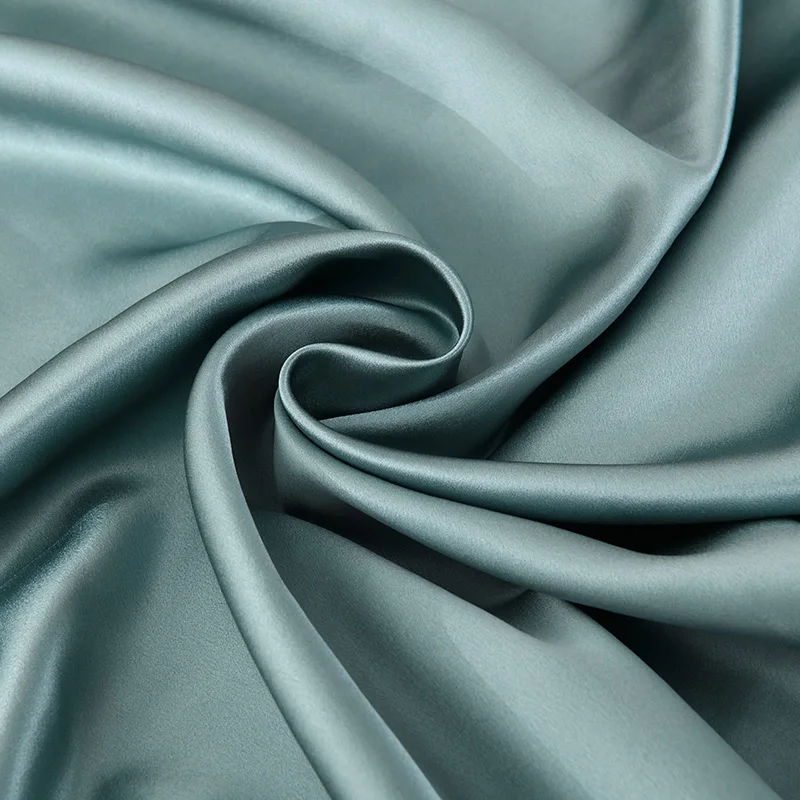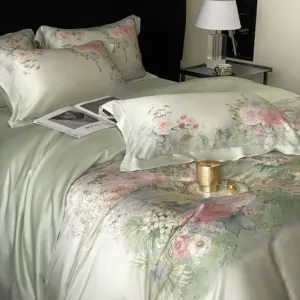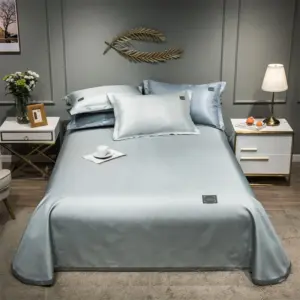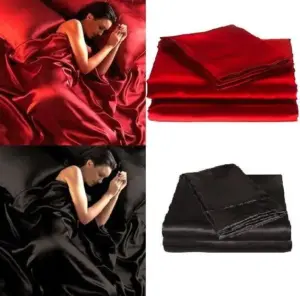Introduction: Embracing Cruelty-Free Luxury
The search for luxurious fabrics that don’t harm animals has led to an exciting array of vegan silk alternatives. These plant-based or synthetic materials cleverly mimic silk’s beloved properties—softness, sheen, and smooth texture—without using any animal products.
More consumers than ever are seeking ethical luxury in their textiles. Whether motivated by animal welfare concerns, environmental considerations, or personal preferences like allergies, the demand for cruelty-free alternatives to traditional silk has grown significantly.
The sustainable textile market has seen double-digit growth in recent years, with major fashion houses and home goods brands incorporating vegan silk alternatives into their luxury collections. This shift reflects a broader consumer movement toward mindful consumption, where ethics and aesthetics go hand in hand.
In this comprehensive guide, you’ll discover:
- The full range of plant-based and innovative vegan silk alternatives
- How each alternative compares to traditional silk in feel, appearance, and performance
- Production methods and sustainability profiles
- Best applications for each fabric type
- Proper care instructions to maintain your vegan silk’s beauty
Finding the perfect vegan silk alternatives for bedding doesn’t mean sacrificing luxury or comfort. By understanding silk properties to better appreciate alternatives, you’ll be equipped to make choices that align with both your values and your desire for luxury.
The True Cost of Traditional Mulberry Silk: Why Seek Alternatives?
To appreciate why vegan alternatives matter, it helps to understand conventional silk production. Traditional mulberry silk involves:
- Raising silkworms (Bombyx mori) that feed exclusively on mulberry leaves
- Allowing the silkworms to spin cocoons, which they do by producing a continuous protein fiber
- Harvesting the cocoons before the metamorphosis is complete
- Boiling the cocoons with the silkworms still inside to prevent them from breaking the continuous filament
- Unwinding the filaments and twisting them together to create silk thread
This process results in the death of approximately 3,000 silkworms for every pound (0.45 kg) of silk produced. For those seeking cruelty-free options, this fact alone is compelling reason to explore alternatives.
Beyond ethical concerns, conventional silk production raises environmental questions:
- Water usage: Mulberry cultivation requires significant irrigation—up to 10,000 gallons of water per pound of raw silk
- Land use: Dedicated mulberry plantations take up agricultural land
- Processing chemicals: The degumming process (removing sericin, the sticky substance coating silk fibers) often uses harsh chemicals
- Energy consumption: From boiling cocoons to final processing, silk production demands substantial energy inputs
When you explore the properties of traditional mulberry silk, you’ll better understand what qualities to look for in alternatives. Many consumers are surprised to learn that several plant-based fabrics can offer similar—and sometimes superior—benefits compared to conventional silk products.
What Makes an Ideal Vegan Silk Alternative? Key Criteria
When evaluating vegan silk alternatives, several key criteria help determine which option best suits your needs:
- Ethical sourcing: Free from animal products or exploitation throughout the production chain
- Sensory properties: How closely the material mimics silk’s characteristic softness, sheen, and drape
- Performance properties: Breathability, temperature regulation, and moisture management
- Sustainability factors: Resource usage, chemical inputs, and biodegradability
- Practical considerations: Durability, care requirements, and availability
It’s important to understand the difference between fibers and weaves. For example, satin is a weave pattern (with longer floats creating a smooth surface), not a fiber type. Satin can be made from silk, polyester, or even cotton.
No single alternative will perfectly match all of silk’s properties—after all, silk’s unique protein structure and incredibly long filaments (up to 1,000 meters from a single cocoon) give it its distinctive qualities. However, many vegan alternatives excel in specific aspects, and some come remarkably close to replicating the overall silk experience.
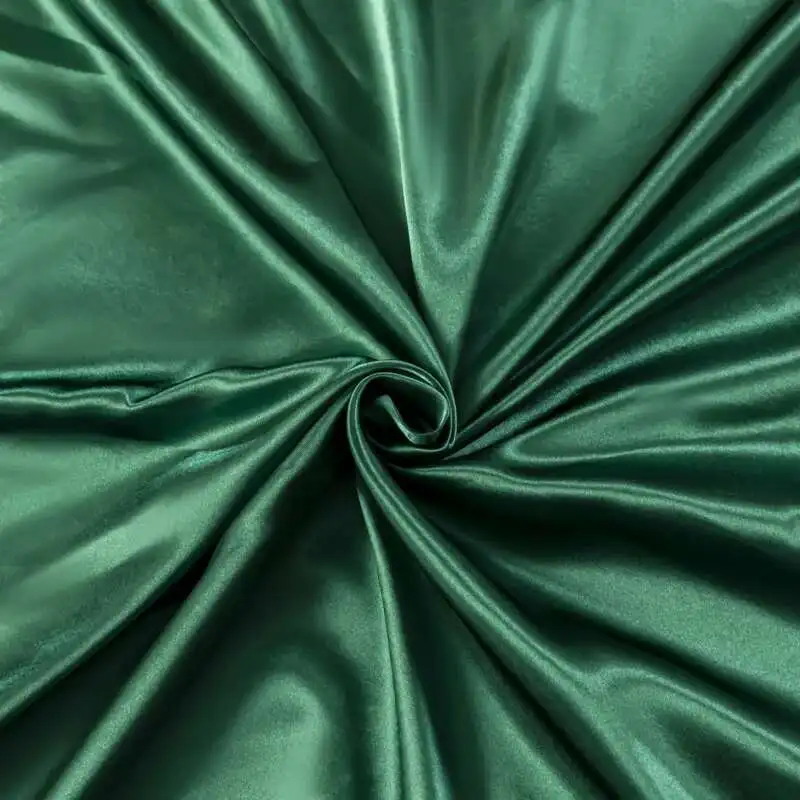
Making an informed choice starts with detailed comparison between traditional silk and vegan alternatives. By understanding what properties to look for in alternatives, you can find options that deliver the luxury experience you desire while aligning with your values.
Plant-Based Vegan Silk Alternatives: Premium Options
The most luxurious plant-based alternatives come closest to replicating silk’s coveted properties while maintaining high ethical standards. These premium options offer exceptional quality and performance for discerning consumers seeking the best in vegan textiles.
Exploring the world of premium plant-based silk alternatives reveals options that rival or even surpass traditional silk in certain properties.
Tencel™ Lyocell: Sustainable Luxury
Tencel™, a branded form of lyocell, stands out as perhaps the closest plant-based alternative to silk in terms of feel and drape. This remarkable fabric comes from sustainably harvested wood pulp, primarily from eucalyptus trees.
Key properties:
– Exceptionally smooth and silky feel against the skin
– Beautiful, fluid drape that mimics silk’s movement
– Excellent breathability and moisture management
– Natural temperature regulation (cool in summer, warm in winter)
– Strong yet lightweight
The production process for Tencel™ uses a closed-loop system where over 99% of the solvent is recovered and reused, minimizing environmental impact. This process uses about 95% less water than cotton production and relies on FSC-certified forests that don’t require irrigation or pesticides.
Tencel™’s silky feel comes from its nano-fibril structure—microscopic fibrils that create an incredibly smooth surface. This makes it perfect for Tencel/lyocell bedding applications where comfort against the skin is paramount.
Cupro: The Byproduct Beauty
Cupro offers another luxurious vegan alternative with a fascinating origin story. This fabric is made from cotton linter—the ultra-short fibers that cling to cotton seeds after the longer fibers have been removed for conventional cotton production.
Key properties:
– Exceptionally fluid drape that many consider superior to silk
– Cooling sensation against the skin
– Lustrous appearance similar to silk satin
– Excellent for lightweight garments and linings
– Biodegradable as a cellulose-based fiber
The production process involves dissolving the cotton linters in a copper and ammonia solution (hence the name “cupro”), then extruding this solution into fibers. While this process does use chemicals, it repurposes what would otherwise be a waste product of cotton production.
Cupro has gained popularity in high-end fashion, where it’s often marketed as “vegan silk” due to its remarkable drape and flow. Its cooling effect makes it especially suitable for warm weather garments and bedding where temperature regulation matters.
Lotus Silk: The Rarest Natural Silk Alternative
For those seeking the ultimate in exclusive luxury, lotus silk represents perhaps the most rare and labor-intensive textile in the world. This extraordinary fabric is harvested from the stems of lotus plants, primarily in Myanmar and Cambodia.
Key properties:
– Natural sheen that resembles silk but with a more textured appearance
– Incredible breathability and lightweight nature
– Softness that actually increases with wear
– Completely natural production with minimal environmental impact
– Cultural and historical significance
The production process is entirely manual and remarkably time-consuming. Skilled artisans extract the lotus fibers by hand, carefully pulling them from cut stems before the sap dries. These thin, delicate fibers are then spun into thread and woven into fabric.
To put its rarity in perspective: it takes about 32,000 lotus stems to create enough fabric for a single scarf, and producing a complete garment can require two months of full-time labor. This intensive process explains its status as one of the most expensive textiles in the world, often commanding prices several times higher than fine silk.
Plant-Based Vegan Silk Alternatives: Accessible Options
While premium alternatives offer the closest match to traditional silk, more accessible plant-based options provide excellent alternatives at friendlier price points. These materials deliver many silk-like qualities while being more widely available and often more practical for everyday use.
Bamboo Lyocell and Viscose: Soft and Versatile
Bamboo-derived fabrics have gained enormous popularity for their exceptional softness and accessibility. However, it’s important to distinguish between different production methods:
Bamboo viscose/rayon (more common):
– Uses chemical-intensive processes similar to conventional rayon
– Creates extremely soft fabric with a subtle sheen
– Less environmentally friendly due to chemical usage
– Often more affordable
Bamboo lyocell (more sustainable):
– Uses closed-loop processes similar to Tencel™
– Minimizes chemical waste and environmental impact
– Typically more expensive than viscose but more eco-friendly
– Similar soft feel and performance
Both types offer impressive properties for bamboo-based silk alternatives:
– Exceptional softness that rivals cashmere
– Natural moisture-wicking and breathability
– Slight natural sheen reminiscent of silk
– Good drape for clothing and bedding applications
– Temperature-regulating properties
Bamboo fabrics excel in bamboo-based silk alternative bedding sets where their softness and moisture management create a comfortable sleep environment. They’re also excellent for intimate apparel and loungewear where comfort is paramount.
Soy Silk: From Food Industry Byproduct
Soy silk represents an innovative use of what would otherwise be waste material. This fabric is created from the residue of soybean processing for tofu and soymilk production.
Key properties:
– Soft, smooth hand feel with good drape
– Protein-based (like natural silk) rather than cellulose-based
– Light sheen similar to silk but more subtle
– Good moisture absorption and breathability
– Often blended with other fibers to enhance properties
The production process involves extracting protein from soybean pulp, then spinning it into fibers using wet-spinning techniques. While this process does use chemicals, it repurposes agricultural waste that might otherwise be discarded.
Soy silk’s protein structure gives it a unique position among vegan alternatives, as it’s chemically more similar to animal-based silk than cellulosic fibers. This contributes to its silk-like feel and performance. It’s commonly used in lightweight garments, often in blends with cotton or other fibers to enhance durability.
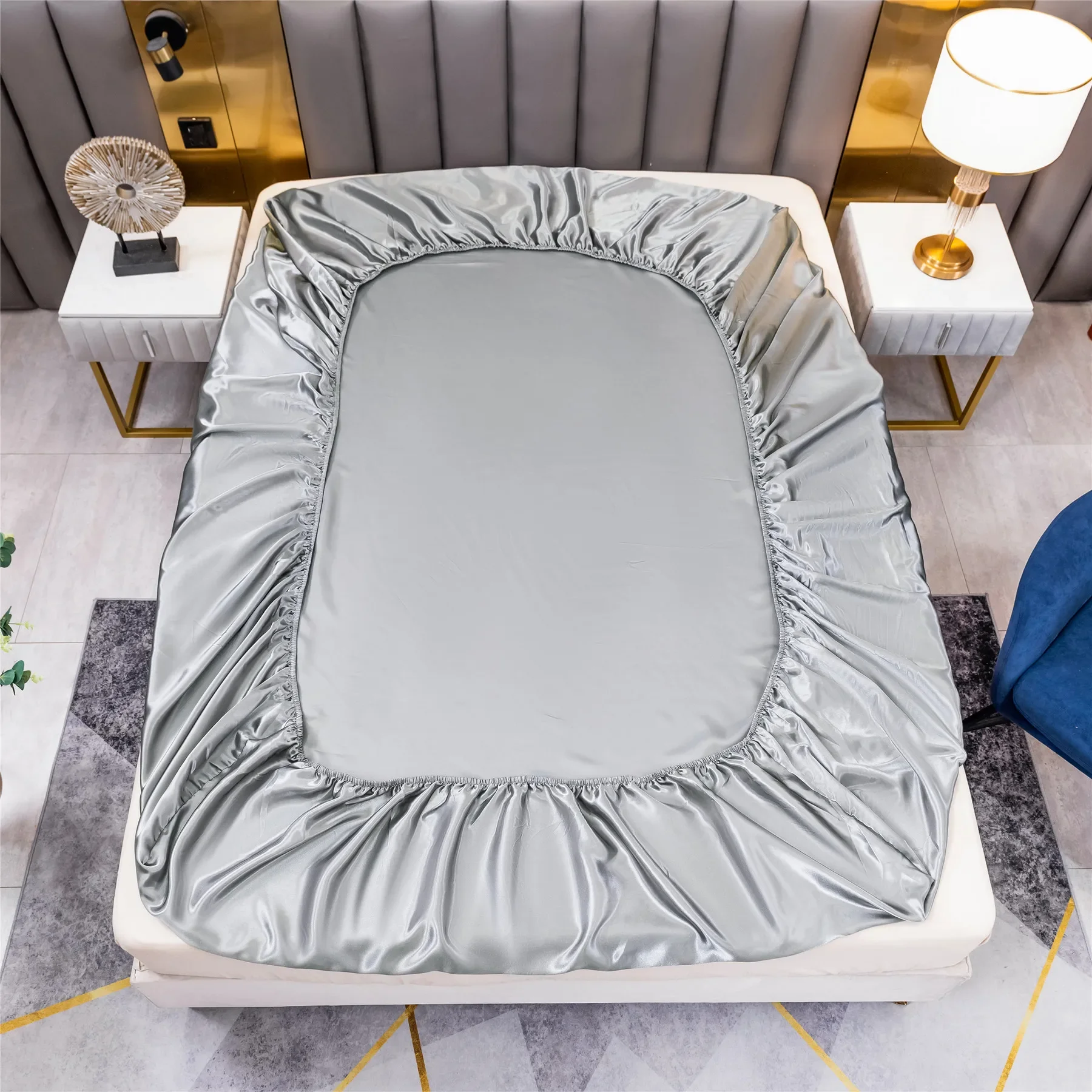
Hemp Silk: Durable and Earth-Friendly
Hemp offers perhaps the most environmentally friendly option among vegan silk alternatives, though it requires significant processing to achieve a silk-like quality.
Key properties:
– Exceptional durability and longevity
– Becomes increasingly soft with each washing
– Natural antibacterial and antimicrobial properties
– Excellent breathability and moisture-wicking
– Outstanding sustainability credentials
Traditional hemp fabric has a reputation for coarseness, but modern processing techniques can create surprisingly refined textures. The degree of softness largely depends on the processing method—enzyme-softened hemp can achieve a remarkably smooth hand feel while retaining hemp’s durability benefits.
Hemp requires minimal water, no pesticides, and actually improves soil health by removing toxins—making it one of the most sustainable textile crops available. It grows quickly and yields more fiber per acre than cotton while requiring fewer resources.
The best hemp fabrics for silk-like applications use finer fibers and specialized finishing techniques to enhance drape and softness. These higher-end hemp textiles can be suitable for flowing garments and bedding where both sustainability and comfort are priorities.
When considering the best fabric for your skin, comparing skin benefits between traditional silk and vegan alternatives helps identify which option best suits your needs.
Innovative and Emerging Vegan Silk Alternatives
The textile industry continues to innovate, creating exciting new alternatives that push the boundaries of what’s possible with plant-based and technology-driven materials. These cutting-edge options represent the next frontier in vegan silk alternatives.
Orange Fiber
Developed in Italy, Orange Fiber transforms citrus juice byproducts—the tons of peels and pulp left from juice production—into a silky, lightweight fabric.
– Silky smooth texture with good drape
– Subtle sheen similar to traditional silk
– Infused with citrus essential oils for skin benefits
– Currently used by several high-end fashion brands
– Limited availability but growing production
Rose Silk
This innovative material uses the residue from rose oil production, particularly from the perfume industry.
– Delicate texture with natural sheen
– Slight rose fragrance in early iterations
– Sustainable use of agricultural waste
– Currently in limited production
– Often blended with other fibers
Pineapple Fiber/Piñatex
Created from pineapple leaf fibers, a byproduct of pineapple harvesting.
– More leather-like in standard form, but can be refined for softer applications
– Durable yet breathable
– Supports farming communities by creating value from waste
– Already commercially available, primarily in accessories and footwear
– Research ongoing to create softer, more silk-like versions
Banana Silk
Derived from the stems of banana plants after fruit harvesting.
– Natural sheen with distinctive texture
– Good drape and breathability
– Utilizes agricultural waste that would otherwise be discarded
– Traditional production in some regions, with modern adaptations emerging
– Variable quality depending on processing methods
Bio-engineered Silk Proteins
Perhaps most revolutionary are companies using biotechnology to create silk proteins without silkworms.
– Uses fermentation processes similar to brewing beer
– Genetically modified yeast or bacteria produce real silk proteins
– Potentially identical to silk at the molecular level
– Currently in limited production for specialty applications
– Expected to scale up in coming years
These innovations offer exciting emerging sustainable alternatives to traditional silk with continuously improving properties and availability.
Understanding Peace Silk: A Humane Animal Alternative
While not strictly vegan, peace silk (also called Ahimsa silk or Eri silk) deserves mention as an ethical alternative to conventional silk production. This approach allows the silkmoth to complete its lifecycle naturally before the cocoon is harvested.
How Peace Silk differs from conventional silk:
– Silkworms are allowed to emerge as moths before cocoons are harvested
– No boiling of cocoons with moths inside
– Moths complete their natural lifecycle and reproduce
– Results in broken filaments rather than continuous threads
– Requires different spinning and processing techniques
The resulting fabric has distinct properties:
– Slightly less sheen than conventional silk
– Warmer, cozier texture
– More textured appearance with a matte finish
– Generally more durable but less fine
– Often has a softer drape
For those primarily concerned with animal welfare rather than strict veganism, peace silk offers a compromise option. The moths live out their full lifecycle, but the material still uses animal-derived fiber. This distinction matters to different ethical consumers in different ways.
Peace silk production is particularly associated with certain regions of India, where it has cultural and historical significance. It typically commands a higher price than conventional silk due to the more labor-intensive collection and processing required to work with the broken filaments.
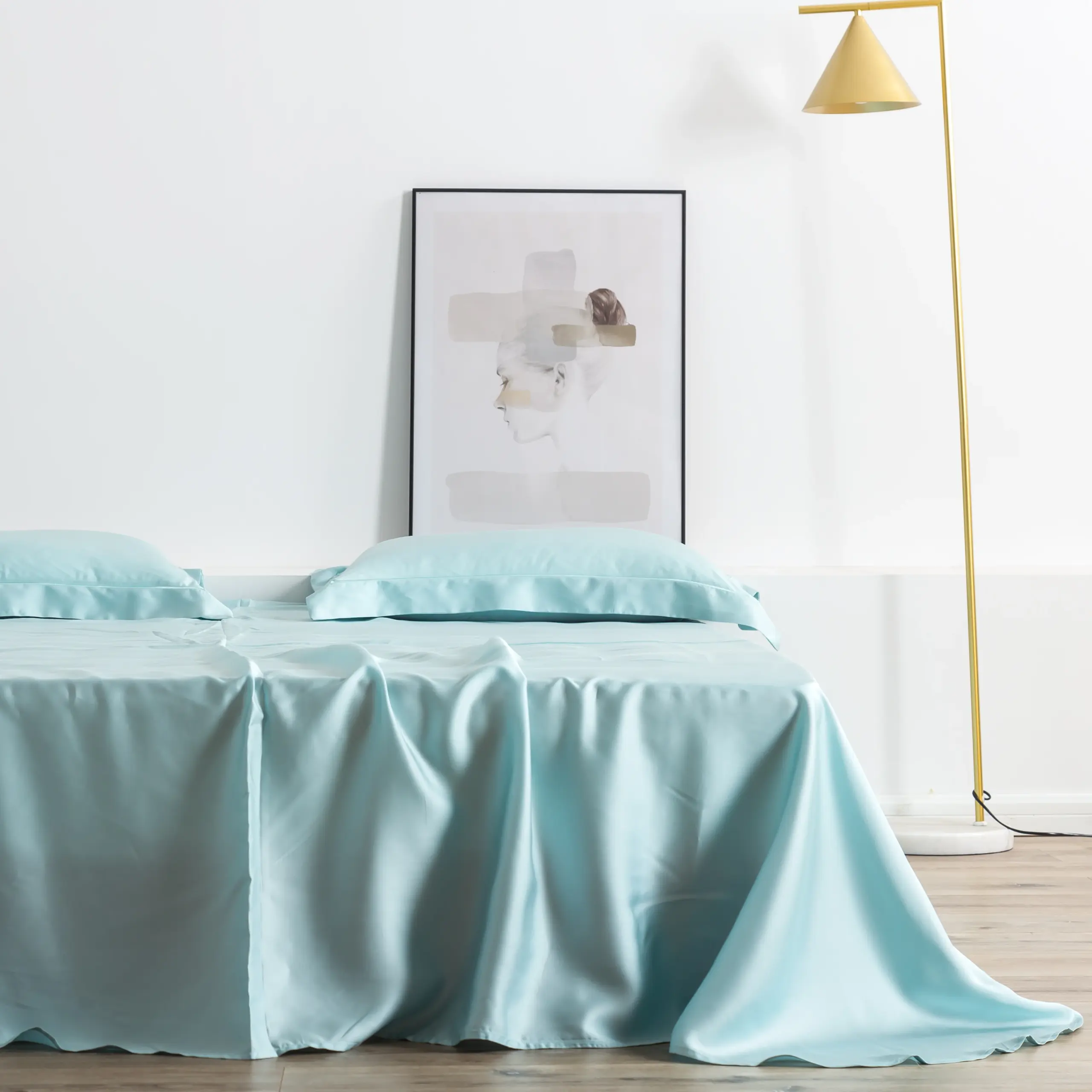
When considering various bedding options, understanding traditional silk helps provide context for evaluating all alternatives.
Choosing Your Ideal Vegan Silk Alternative: Comparative Analysis
With so many options available, selecting the right vegan silk alternative depends on your specific priorities and needs. This comparative analysis helps you understand the relative strengths of each material.
| Material | Feel/Texture | Drape | Sheen | Breathability | Durability | Environmental Impact | Price Range | Best Applications |
|---|---|---|---|---|---|---|---|---|
| Tencel™/Lyocell | Very smooth, silky | Excellent, fluid | Medium | Excellent | Good | Low-Medium | $$$ | Bedding, flowy garments |
| Cupro | Ultra smooth | Superior, fluid | High | Excellent | Moderate | Medium | $$$$ | Linings, lightweight garments |
| Lotus Silk | Textured silk-like | Good | Medium-low | Excellent | Good | Very Low | $$$$$ | Luxury scarves, special occasion |
| Bamboo Viscose | Very soft | Good | Low-medium | Good | Moderate | Medium-High | $$ | Bedding, intimate wear |
| Bamboo Lyocell | Very soft | Good | Low-medium | Good | Moderate | Medium | $$$ | Bedding, intimate wear |
| Soy Silk | Soft, smooth | Moderate | Medium | Good | Moderate | Medium | $$$ | Lightweight garments, blends |
| Hemp Silk | Increasingly soft | Moderate | Low | Excellent | Excellent | Very Low | $$-$$$ | Durable garments, bedding |
| Orange Fiber | Smooth | Good | Medium | Good | Moderate | Low | $$$$ | Fashion garments |
| Peace Silk | Soft, textured | Good | Medium | Excellent | Good | Medium | $$$$ | Traditional garments, special occasion |
Decision framework based on priorities:
If feel closest to traditional silk is your priority:
Tencel™/Lyocell and Cupro offer the closest sensory experience to conventional silk, with their smooth feel and excellent drape. These materials excel in applications where the fabric’s movement and feel against skin matter most.
If sustainability is your top concern:
Hemp silk, Lotus silk, and well-produced Tencel™ represent the most environmentally friendly options. Hemp uses minimal resources and improves soil health, while Lotus uses parts of the plant that would otherwise be discarded and requires no chemicals in processing.
If you’re looking for affordability:
Bamboo viscose and quality cotton sateen (in a satin weave) provide the most accessible price points while still offering some silk-like properties. These materials have become widely available and work well for everyday use.
If durability matters most:
Hemp silk stands out for its exceptional longevity, becoming softer with each washing while maintaining structural integrity. For items that will see frequent use, this makes hemp a practical long-term investment.
Understanding what qualities to look for in alternatives helps when comparing options to traditional luxury bedding sets.
Care and Maintenance: Keeping Your Vegan Silks Beautiful
Proper care extends the life and beauty of your vegan silk alternatives. While generally easier to maintain than real silk, each material has specific care requirements.
General care principles for all delicate fabrics:
– Use mild, pH-neutral detergents
– Avoid bleach and harsh chemicals
– Wash in cool to lukewarm water when possible
– Air dry when feasible or use low heat settings
– Store clean and fully dry to prevent mildew
Specific guidance by material type:
Cellulosic fibers (Tencel™, Bamboo, Cupro)
– Machine washable on gentle cycle in most cases
– Can shrink in high heat, so air dry or use low heat settings
– Iron on low-medium heat if needed
– Avoid fabric softeners which can coat fibers and reduce breathability
– Cupro in particular benefits from gentle washing methods
Protein-based fibers (Soy)
– More delicate washing required (gentle cycle or hand wash)
– Avoid enzymes in detergent as they can break down protein fibers
– Dry flat to maintain shape
– Iron on low heat only when necessary
– Store folded rather than hanging for long periods
Sturdy plant fibers (Hemp)
– Most durable and easiest to care for
– Machine washable, becomes softer with washing
– Can withstand higher heat in drying than other alternatives
– Minimal special care required
– Long lifespan with proper care
Rare/specialty fibers (Lotus, Orange)
– Often require more specialized care
– Hand washing recommended for most
– Air dry flat or on a padded hanger
– Store with minimal folding to prevent permanent creases
– Follow manufacturer guidelines closely
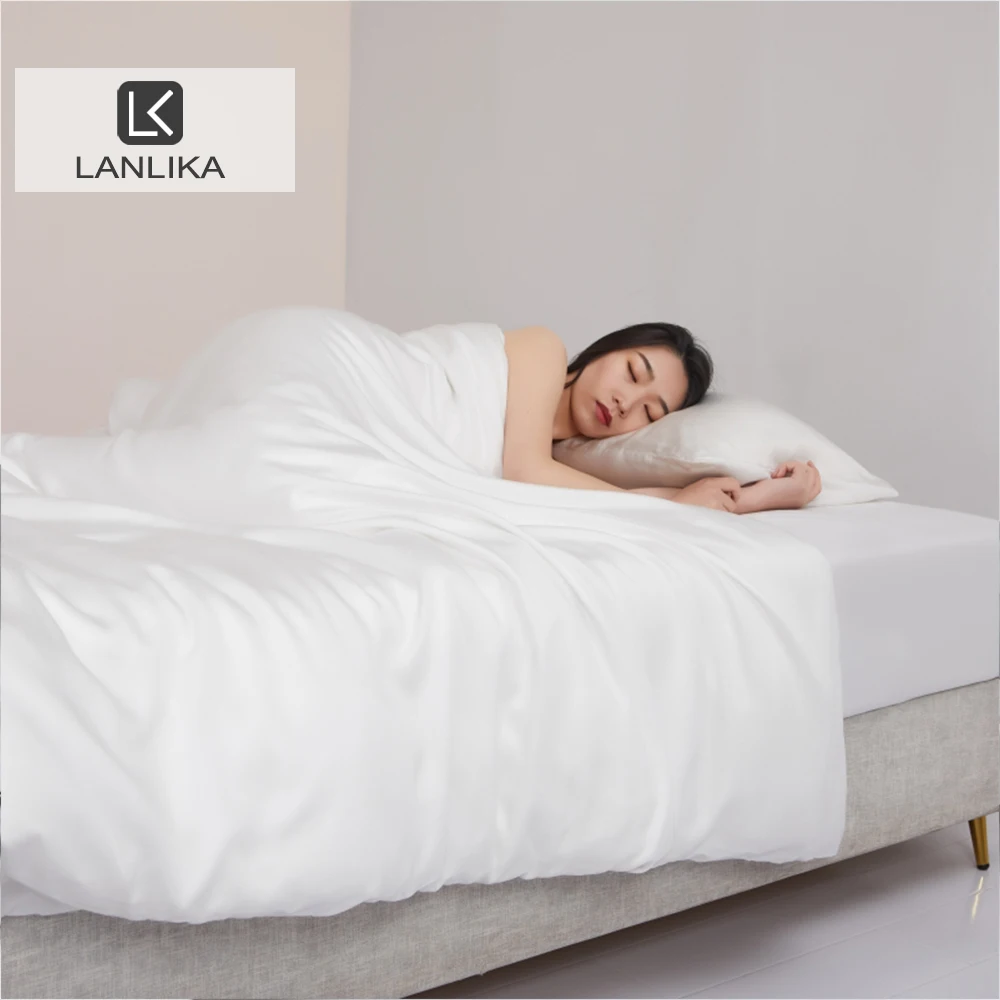
Troubleshooting common issues:
– Pilling: Use a fabric shaver or pill remover for bamboo and soy fabrics that develop pills
– Wrinkling: Hang in bathroom during shower to let steam release wrinkles
– Fading: Turn items inside out when washing and avoid direct sunlight when drying
– Static: Use an appropriate fabric spray or increase humidity where items are stored
For those transitioning from traditional silk, care comparison between traditional silk sets and vegan alternatives helps maintain your investment properly.
How Sanctuary Soft’s Vegan Collection Compares
At Sanctuary Soft, our commitment to ethical luxury extends beyond our traditional silk offerings to embrace the finest vegan alternatives. We’ve carefully selected plant-based options that maintain our high standards for luxury, comfort, and performance.
Our vegan collection focuses primarily on premium alternatives like Tencel™ and high-quality bamboo lyocell that closely mimic the sensory experience of fine silk. Each fabric in our collection undergoes rigorous testing for:
- Hand feel and texture against skin
- Drape and movement
- Durability through multiple wash cycles
- Temperature regulation capabilities
- Moisture management performance
- Color retention and vibrancy
We believe that ethical choices shouldn’t require compromising on luxury. Our vegan silk alternative products deliver many of the same benefits that have made our traditional silk collection popular:
- Natural temperature regulation for year-round comfort
- Skin-friendly surfaces that minimize friction
- Breathable fabrics that promote better sleep
- Beautiful drape that creates an elegant look
- Long-lasting quality with proper care
Eucalyptus Silk Bedding Sets, Eucalyptus Silk Sheets
Price range: $360.24 through $393.60 Select options This product has multiple variants. The options may be chosen on the product pageGrey Silk Sheets, Silk Sheet and Pillowcase Set
Price range: $88.20 through $146.64 Select options This product has multiple variants. The options may be chosen on the product page- Price range: $267.82 through $306.55 Select options This product has multiple variants. The options may be chosen on the product page
Bamboo Silk Sheets, Cooling Silk Sheets
Price range: $130.76 through $177.80 Select options This product has multiple variants. The options may be chosen on the product pageBamboo Silk Sheets, Queen Size Silk Fitted Sheet
Price range: $230.24 through $297.88 Select options This product has multiple variants. The options may be chosen on the product pageMulberry Silk Fitted Sheet, Mulberry Silk Sheets
Price range: $486.21 through $944.97 Select options This product has multiple variants. The options may be chosen on the product page
For those with sensitive skin concerns, comparing skin benefits between vegan alternatives and traditional silk helps identify the best option for your specific needs.
Frequently Asked Questions About Vegan Silk Alternatives
Which vegan fabric feels most like real silk?
Tencel™ lyocell and cupro generally provide the closest sensory experience to traditional silk. Both offer exceptional smoothness, good drape, and a pleasant feel against the skin. Cupro has a more pronounced sheen, while Tencel™ offers superior breathability and moisture management.
Are vegan silk alternatives as durable as real silk?
Durability varies by material. Hemp silk typically outlasts traditional silk, while materials like bamboo viscose may wear more quickly. Most plant-based alternatives handle washing better than traditional silk but may not maintain their original appearance as long without proper care.
What’s the difference between bamboo viscose and bamboo lyocell?
Both are derived from bamboo pulp, but the processing methods differ significantly. Bamboo viscose uses a more chemical-intensive process similar to conventional rayon production. Bamboo lyocell employs a closed-loop system that recovers and reuses solvents, making it more environmentally friendly though typically more expensive.
Is peace silk considered vegan?
Peace silk (Ahimsa silk) is not considered vegan because it still uses animal-derived materials, even though the moths are allowed to complete their lifecycle before cocoon harvesting. It represents a more humane option for those who aren’t strict vegans but are concerned about animal welfare.
Can vegan silk alternatives be dyed in rich colors like real silk?
Most vegan alternatives accept dyes well, though the specific colors and depth may vary by material. Cellulose-based fibers like Tencel™ and bamboo generally take dye beautifully. Plant fibers like hemp may require more specialized dyeing processes to achieve rich colors.
Which vegan silk alternative is best for sensitive skin?
Tencel™/lyocell and organic peace silk are typically best for sensitive skin. Tencel™ offers exceptional smoothness and breathability with minimal irritation potential. Organic bamboo lyocell (not viscose) is another good option as it’s hypoallergenic and very soft.
Are vegan silk alternatives more sustainable than real silk?
Sustainability varies widely among alternatives. Hemp, organic cotton sateen, and responsibly produced Tencel™ typically have lower environmental impacts than conventional silk. However, some alternatives like conventional bamboo viscose may use chemical-intensive processes. Always research the specific production methods of your chosen alternative.
How can I identify quality in vegan silk alternatives?
Look for smooth, even texture without obvious slubs (unless they’re a design feature). For plant-based fabrics, certifications like OEKO-TEX or GOTS indicate responsible production. Quality alternatives should have consistent color, good drape, and feel substantial rather than flimsy. Reputable brands will specify the exact fiber content rather than using vague marketing terms.
For a deeper understanding of what you might be giving up or gaining, comparing benefits between traditional silk and vegan alternatives offers valuable insights.
The Future of Vegan Textiles: What’s on the Horizon
The landscape of vegan silk alternatives continues to evolve rapidly, with exciting innovations promising even better options in the coming years.
Bio-engineered breakthroughs:
– Companies like Bolt Threads and Spiber are using fermentation processes to create lab-grown spider silk proteins without spiders
– These proteins can be formed into fibers with programmable properties
– Early commercial applications include specialty items and limited edition products
– As production scales, these may become more widely available
Algae-based textiles:
– Research into using algae and microalgae to create fibers
– Potentially ultra-sustainable as algae requires minimal resources to grow
– Could offer unique properties like inherent antimicrobial benefits
– Early development shows promise for future commercialization
Advanced recycling technologies:
– New processes that break down waste materials to molecular level
– These molecules can then be reassembled into high-quality fibers
– Allows for “circular” textile production without quality degradation
– Could significantly reduce resource consumption for textile production
Improvements to existing alternatives:
– Enhanced processing techniques making hemp increasingly fine and soft
– More sustainable production methods for bamboo and other cellulosic fibers
– Better finishing processes that improve durability while maintaining comfort
– Blending technologies that combine the strengths of multiple plant fibers
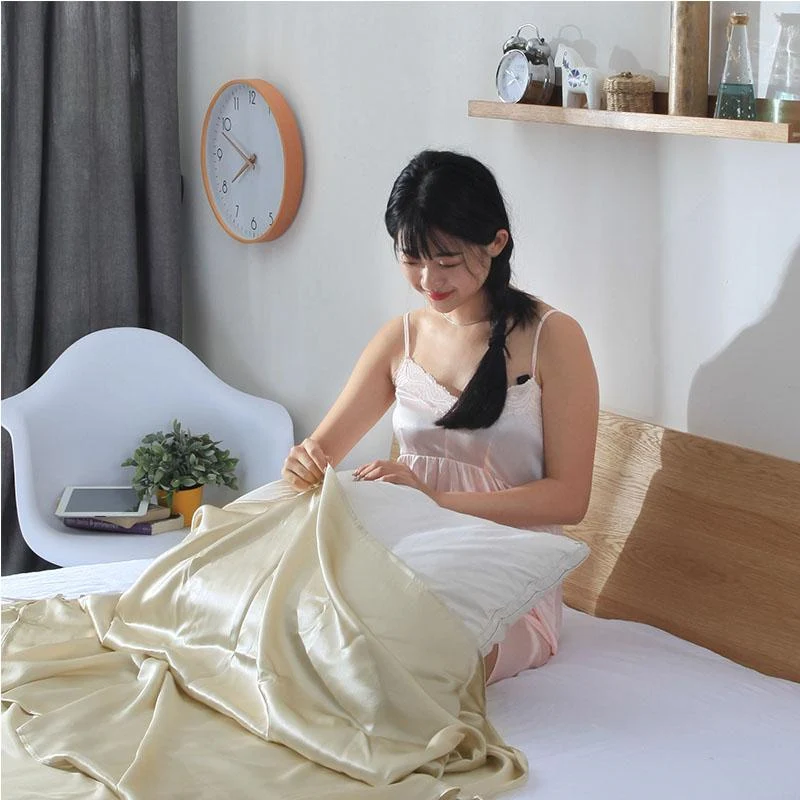
Consumer demand continues to drive innovation in this space, with sustainability concerns increasingly influencing research priorities. Many textile research institutions and innovative startups are focusing specifically on developing better vegan alternatives to traditional animal-derived luxury fabrics.
While some cutting-edge materials remain in development or limited production, the rate of innovation suggests increasingly sophisticated options will become available in the near future.
The cooling properties of traditional and vegan silk alternatives remain an important area of development, as temperature regulation is one of silk’s most valued functional benefits.
As these technologies mature, the line between traditional luxury fabrics and their vegan counterparts will continue to blur, offering ever better options that align ethics with aesthetics. The future of vegan textiles looks not only more sustainable but increasingly luxurious as well.

